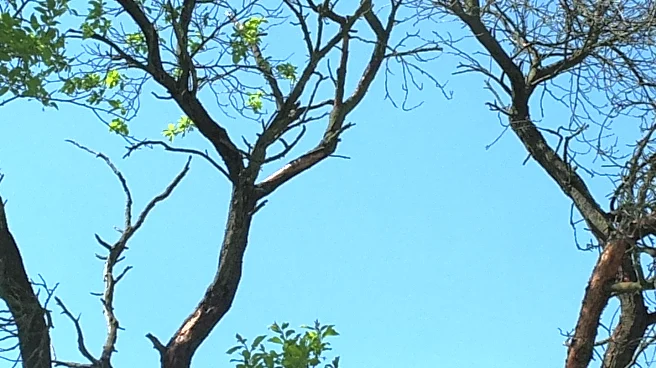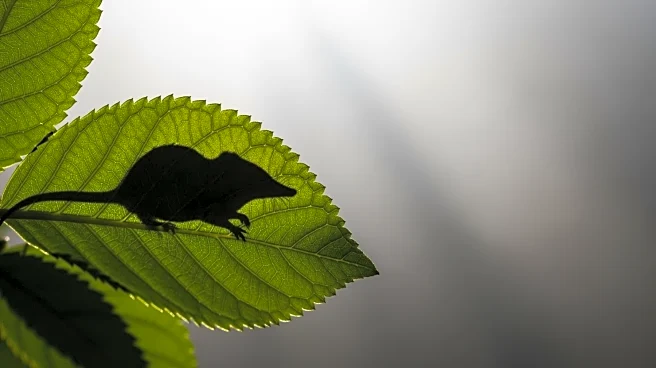What's Happening?
In Chile's Putaendo Valley, the discovery of the rare Andean cat has sparked a conflict between conservation efforts and copper mining interests. The Vizcachitas copper and molybdenum project, owned by
Los Andes Copper Ltd., is transitioning from exploration to full-scale mining, promising metals essential for global decarbonization. However, the presence of the Andean cat, a species requiring vast undisturbed territory, has raised alarms among ecologists and local communities. The mining activities threaten to fragment the biological corridor crucial for the cat's survival, potentially isolating populations and disrupting genetic exchange. Despite a temporary court suspension of drilling in 2022, the project has resumed, with recent rulings allowing further expansion. Local officials and conservationists are advocating for the establishment of a Multiple-Use Conservation Area to protect the valley's ecosystem.
Why It's Important?
The conflict highlights the tension between environmental conservation and the demand for resources critical to the energy transition. Copper is vital for technologies like electric vehicles and renewable energy systems, but its extraction can have significant ecological impacts. The situation in Putaendo Valley underscores the need for balancing industrial development with environmental preservation. The Andean cat's habitat is not only a biodiversity hotspot but also a cultural symbol for local communities. The mining project risks damaging the watershed and disrupting the delicate ecological balance, raising questions about sustainable development practices. The outcome of this conflict could set precedents for how similar situations are handled globally, influencing policies on resource extraction and conservation.
What's Next?
Local residents and conservation groups are pushing for legal protections through the creation of a Multiple-Use Conservation Area, which would limit industrial activities while allowing sustainable local use. This initiative aims to safeguard the Rocín River's water network and highland wetlands. The ongoing legal and environmental debates may lead to increased scrutiny of mining practices and potentially stricter regulations. The broader implications for Chile's mining industry could involve more rigorous environmental assessments and the integration of conservation measures into project planning. Stakeholders, including government agencies, environmental organizations, and the mining sector, will likely continue to negotiate the balance between economic interests and ecological preservation.
Beyond the Headlines
The presence of the Andean cat in the Putaendo Valley serves as a gauge of the region's ecological health, with its survival indicating the well-being of the broader ecosystem. The conflict also reflects the challenges of achieving a 'green' energy transition without compromising biodiversity. The debate over the mining project highlights the need for comprehensive environmental policies that consider long-term ecological impacts alongside immediate economic gains. The situation may prompt discussions on the ethical responsibilities of corporations in preserving endangered species and maintaining ecological integrity.











